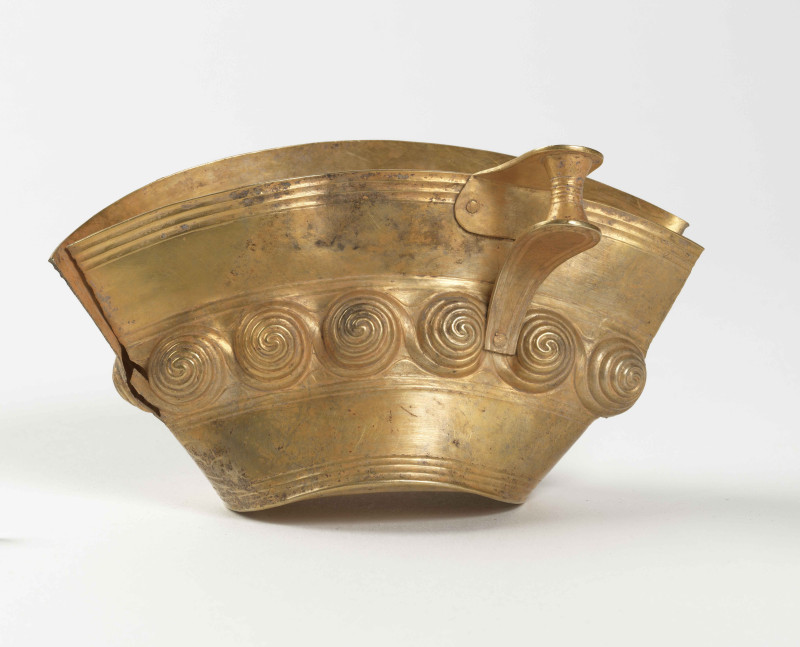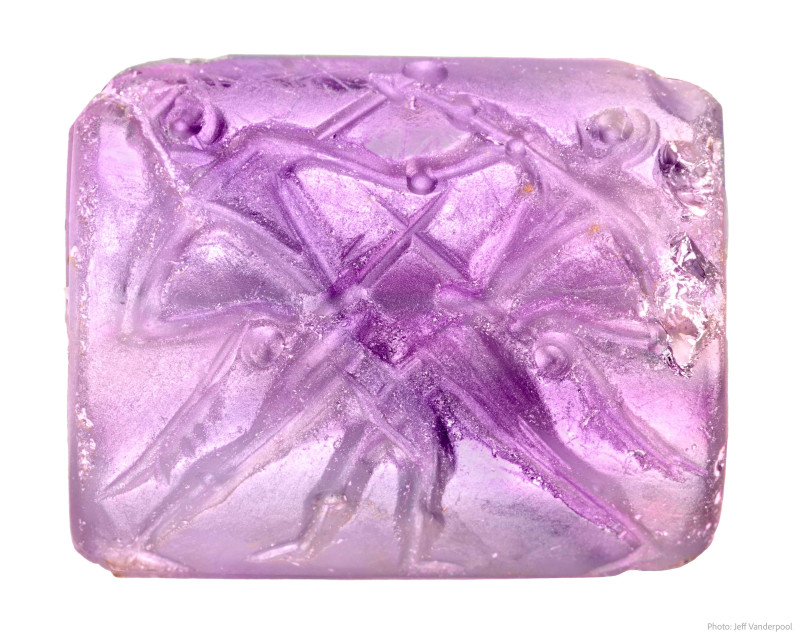For the first time there are exhibits of unique beauty such as the asylum of the so -called “Gripa Tomb of Gripa War” discovered in 2015
Treasures from the Bronze Age are the new periodical exhibition that is inaugurated on Friday, February 14, at the Archaeological Museum of Messinia, in the historic center of Kalamata.
The new periodical exhibition “Princes of Pylos. Treasures of the Bronze Age from Messinia »highlights the Mycenaean Messinian cultural identity, presenting for the first time in the common findings of excellent aesthetic and archaeological significance: the unique beauty of the asylum of the asylum, so -called” Tomb of Gripas ” From the hoe of Jack L. Davis and Sharon R. Stocker from the University of Cincinnati, as well as new findings from vi and VII vaulted tombs in Englianos, the vaulted tomb in fish, the iconic crown from Myrsinochori, and others from earlier excavations.
The periodic exhibition entitled “Princes of Pylos. Treasures of the Bronze Age from Messinia “, organized by the Ministry of Culture/Ephorate of Antiquities of Messinia, will be inaugurated by the Minister of Culture Lina Mendoni on Friday 14/2/2025, at 19:00, and its duration is up to 27/4 /2025. It will then be transferred to the Getty Villa Museum (inaugurated 25/6/2025), where it will remain until January 2026, and after its return to Greece its presentation is scheduled at the National Archaeological Museum. Subsequently, the exhibits will be placed in the permanent re -exposure of the Archaeological Museum of Messinia, which until then will have been renovated and modernized, as it became known today during the presentation of the exhibition at the Amphitheater of the Ministry of Culture.
“When this finding was first revealed (” Grip Grip “), which is shocking because of the arts and the historical information it gives about the Mycenaean world of the time, we all said it was an unpredictable find. To a point, it is so, although the Messinian land, like all of Greece, continue to have such unexpected findings, because the wealth of the Greek archaeological palpitant is so large that we are often faced with such phenomena. What we have here, of course, is even more so because in the Mycenaean years, this tomb was extremely rich. But beyond the individual significance, they all gain greater value and goodwill when they are part of specific policies. That is why in recent years it has a targeted and systematically organized plan. As we put forward Cycladic culture respectively with various actions, so do Mycenaean culture, “said Culture Minister Lina Mendoni.
And he continued: “If one starts from Messinia, besides this exhibition, it is the work of the Ephorate of Antiquities (EFF) in recent years in the Nestor Palace and to highlight the vaulted tombs and in its archaeological site. Peristeria and the complete restoration and expansion of the Archaeological Museum in the country -and all of them are part of specific initiatives, in this case the emergence of Mycenaean culture. To these, the work of the cultural route “Monumental Works of Cyclops and Humans during the Mycenaean period (2nd millennium BC)”, is also added, which is funded by the Recovery Fund and dedicated to the Mycenaean world, “L. Mendoni added to A specific project that, he said, “essentially interconnects and highlights Mycenaean positions, more or less important, in 17 regional units. That is, almost throughout Central Greece, starting from Magnesia, Karditsa, Fthiotida, Fokida, Boeotia, Attica, Argolida, Arcadia, Laconia, Messinia, Ilia, Achaia, Aitoloakarnania, Cephalonia … these are because they serve our policy, the promotion and promotion of the cultures that have developed in the long historical duration in Greece and Greek. With this in mind, we are not talking about individual actions but about a grid of actions, which highlights this particular finding. At the same time, the fact that this exhibition will travel to Los Angeles is also part of the systematic policy of extroversion of Greek culture that we have served with great consistency in recent years …
Therefore, this event serves these two policies: the promotion of Greek culture as a whole and the promotion of the extroversion of Greek culture outside the border, “Ms Mendoni stressed.
The exhibition highlights the Mycenaean Messinian cultural identity, as it began to form at the end of the Middle Helladic and the beginning of the Late Hellenic period, and as it evolved until the late 13th century. For example, when almost the entire Messinian territory was controlled by the kingdom of Pylos, with the Nestor Palace. Among the objects, derived from the grave of Gripa Warrior, the palace of Nestor and many vaulted and chamber tombs of Messinia, including excellent art burials, such as stamps with engraved representations, gold jewelry, glass jewelry, glass. And ivory, arrow spikes, a section of a dental helmet, bronze weapons, clay figurines and written vessels as well as frescoes.
The first room presents representative vessels, frescoes and artifacts by “Nestor’s Palace, the seat of the Kingdom of Pylos” (13th century BC), with a digital display of multimedia material to enrich the exhibition narrative, while in the six exhibition sections B The ‘rulers and burial monuments’ room are presented findings from burial monuments of important Mycenaean positions, in a layout referring to the endless circular shape, the shape of the vaulted tomb. The circular showcase with the impressive findings from the “Grip of the Warrior Ground” is in the lead position, while, among many others, the wall “burial monuments in Englian” stand out with new findings from the viral tombs VI KAI VII, which demonstrates close contacts. with Egypt and Mesopotamia.
The presentation was made by the Head of EFA Messinia Evangelia Militsi-Kechaya, who was in charge of the exhibition and coordination of the exhibition, and by the Head of the Working Group, Demosthenes Kosmopoulos, Archaeologist, Deputy Head . Also, a greeting and many congratulations on the organization was addressed by the Secretary General of Culture, George Teaskalou and the Director of Antiquities and Cultural Heritage of Olympia Vikatou.
The exhibition is a crowning of the excellent cooperation of EFA Messinia with the archaeologists of the University of Cincinnati, Professor Jack Davis and Dr. Sharon Stocker, who under the auspices of the American School of Classics in Athens and the supervision of the Ministry of Culture Last years in the area of the palace on the hill of Ano Englianos, the so -called Palace of Nestor, near the current settlement of the country of Messinia.
Source :Skai
I am Frederick Tuttle, who works in 247 News Agency as an author and mostly cover entertainment news. I have worked in this industry for 10 years and have gained a lot of experience. I am a very hard worker and always strive to get the best out of my work. I am also very passionate about my work and always try to keep up with the latest news and trends.











